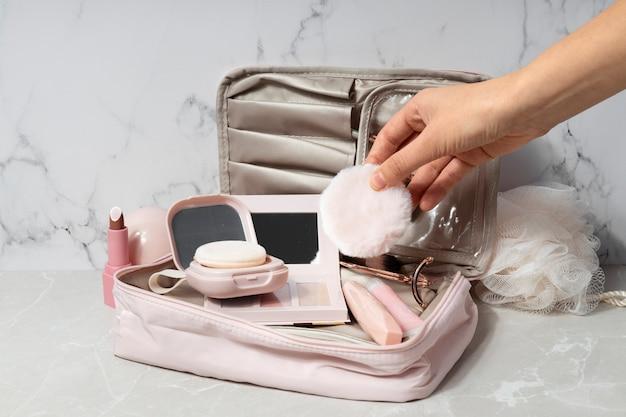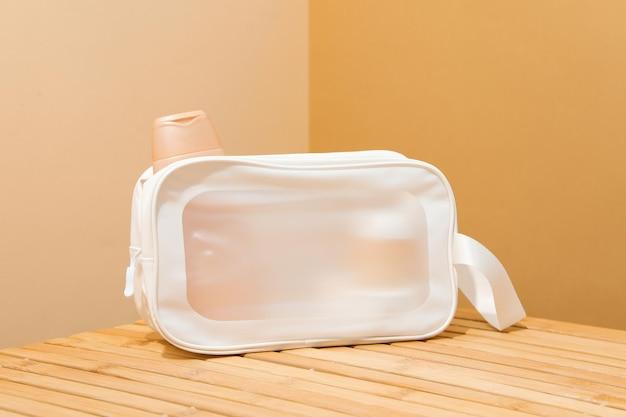Have you ever wondered what happens to your toiletries when your house needs to be fumigated? Whether it’s a pest control treatment or a termite tenting, fumigation can raise a lot of questions about what items in your home need special attention. From shampoo bottles and lotions to food items in the fridge, it’s important to know how to properly prepare your belongings for fumigation.
In this blog post, we will answer some common questions about fumigation and provide you with practical tips to ensure a smooth and safe process. You’ll learn whether you need to bag your toiletries, empty your fridge, or even unplug your refrigerator. So, if you’re curious about what to expect during fumigation and how to protect your belongings, keep reading!

Do You Need to Bag Your Toiletries for Fumigation
When it comes to fumigation, we all want to ensure that our homes are free from those pesky pests. But what about your toiletries? Do you really need to bag them up before the fumigation team arrives? Let’s dive into this common concern and find out the truth behind the myth.
Understanding the Fumigation Process
Before we tackle the toiletries issue, it’s important to understand how fumigation works. Once the fumigators arrive, they’ll cover your entire home with a tent-like structure to contain the fumigant. This powerful gas is designed to penetrate all nooks and crannies, ensuring that it reaches even the most determined critters.
To Bag or Not to Bag, That is the Question!
Now, let’s talk about your toiletries. While it might seem logical to bag them up to protect them from the fumigant, the truth is that it’s not necessary. In fact, the fumigant used in the process is a gas that quickly dissipates after the treatment is complete. So, there’s no need to go through the trouble of bagging up all your toothbrushes, soaps, and shampoos.
Keep Calm and Leave Your Toiletries Alone
While it might be tempting to embark on a toiletry bagging spree, it’s best to resist the urge. Leaving your toiletries in their usual place won’t affect the efficiency of the fumigation process. Those little bottles of shampoo won’t turn into miniature chemistry experiments overnight, we promise!
Special Considerations for Medications and Food Items
While toiletries don’t need to be bagged, there are a few exceptions to keep in mind. Medications and food items should always be handled with care during fumigation. It’s crucial to seal them in airtight containers or bags to prevent any potential contamination. Always consult with your fumigation company for specific instructions regarding these items.
Trust the Professionals
When it comes to fumigation, it’s crucial to trust the professionals. They have the knowledge, experience, and expertise to handle the process safely and efficiently. If you have any concerns about your toiletries or any other belongings, don’t hesitate to communicate with the fumigation team. They will guide you through the necessary precautions to take.
In conclusion, there’s no need to bag your toiletries for fumigation. The fumigant used in the process is a gas that dissipates quickly, leaving your personal care items unaffected. However, medications and food items should be properly sealed to avoid potential contamination. Remember to always rely on the guidance of the professionals to ensure a smooth and successful fumigation experience. Happy bug-busting!

FAQ: Do Toiletries Need to be Bagged for Fumigation
Welcome to our comprehensive FAQ section on fumigation and the precautions you need to take with your toiletries. We’ve got all the answers you need to ensure a safe and hassle-free fumigation process.
Do I need to empty the fridge for fumigation
No need to say goodbye to your favorite snacks! While it’s important to remove perishable food items from your fridge before fumigation, sealed and unopened non-perishable items can stay put.
Do you need to bag shampoo for fumigation
Shampoo, conditioner, and other bathroom essentials are safe from fumigation’s reach. No need to bag them, unless you’re worried about them accidentally spilling everywhere (we’ve all had those mornings!).
What happens if you eat food exposed to Vikane gas
While Vikane gas is not safe to consume, rest assured that proper precautions are taken during fumigation to ensure food is secure. Just remember to remove any exposed food or utensils before treatment starts, and you’ll be good to go.
Is wine safe during fumigation
Don’t fret, wine lovers! You can keep your precious bottles in the cellar or pantry during fumigation. However, if you’re expecting a long fumigation process, it might be wise to toast to a post-fumigation celebration!
What do you do with mattress fumigation
Mattresses can become cozy homes for unwanted pests, so fumigating them is a smart move. To prepare for mattress fumigation, remove all bedding and seal them in bags. After the treatment, let your mattress breathe and air out before putting the fresh sheets back on.
What should be bagged during fumigation
To be on the safe side, it’s a good idea to bag up any opened or unsealed food items, including snacks, cereals, and spices. Be sure to mark the bags clearly to avoid any post-fumigation confusion. Better safe than sorry, right?
Do you have to unplug your refrigerator when fogging the house
No unplugging necessary! When fogging your house, you don’t need to worry about unplugging your refrigerator or any other electrical appliances. Just make sure to cover them to keep any residue at bay.
What do I need to remove for fumigation
During fumigation, it’s important to remove or properly seal any exposed food, drinks, medicines, and toiletries. Additionally, pet food, toys, and bedding should also be kept away. Remember, it’s better to prepare beforehand than risk any contamination.
What can be left in the house during fumigation
You can leave most of your belongings in the house during fumigation, as long as they are properly sealed or covered. However, it’s best to remove any items that might come into direct contact with food, such as unprotected dishes or cutlery.
Are dishes safe to use after fumigation
Absolutely! Once the fumigation process is complete and you’ve aired out your house, your dishes can be safely used again. Just give them a quick wash to make sure any residue is removed, and you’re good to go.
How do I prepare my kitchen for pest control
To get your kitchen ready for pest control, remove all food and utensils from open cupboards and drawers. Keep them sealed in bags or airtight containers. By doing so, you’ll make it easier for the pest control professionals to do their job effectively.
Does fumigation affect electronics
Fear not, tech enthusiasts! Fumigation won’t harm your beloved electronics. However, it’s a good idea to cover them to protect against any residue that may be present during the process. Keep those gadgets safe!
Do soda cans need to be bagged for fumigation
Pop the top and enjoy! Soda cans are safe to stay unbagged during fumigation. Just be cautious about consuming any beverages that may have been exposed to fumigation chemicals, as it’s always better to be safe than sorry.
Why is gas turned off during fumigation
Safety first! Turning off the gas supply during fumigation is a precautionary measure. This ensures that no accidental ignition occurs during the process, guaranteeing a safe environment for everyone involved.
Does lotion need to be bagged for fumigation
Keep those skin-care essentials accessible during fumigation! Lotions and creams don’t need to be bagged unless you’re concerned about spills or cross-contamination. Time to pamper yourself amidst the bug-busting chaos!
How do you pack food for fumigation
When it comes to preparing food for fumigation, it’s best to remove all exposed and unsealed items from your pantry and fridge. Place them in sealed bags or containers to prevent contamination. Don’t forget to label them clearly, or you might end up with a mysterious meal!
Is bottled water safe from fumigation
No need to worry about your hydration game! Sealed bottled water is safe from fumigation. Just make sure the caps are tightly secured before the professionals work their magic. Stay refreshed and worry-free!
Does fumigation affect books
Dive into your favorite stories without worry! Fumigation won’t directly harm your books. However, it is a good idea to cover them or store them in sealed containers to protect against any residue that may be present during the process.
How long after fumigation is it safe
Safety is our top priority! After fumigation, it’s essential to wait until the specified re-entry time provided by the professionals. This ensures that the fumigant has dissipated completely, allowing you to safely return to your bug-free abode.
How do you prepare a kitchen for fumigation
To prepare your kitchen for fumigation, start by removing all exposed food, drinks, and utensils from counters, open cupboards, and drawers. Seal them in bags or airtight containers, and make sure to cover any appliances or surfaces you want to protect. Goodbye bugs, hello sparkling kitchen!
Does fumigation leave residue
Fumigation is like a magician’s trick—it disappears without a trace! When done correctly, fumigation should not leave any noticeable residue. However, it’s always best to give your house a good airing-out before settling back in.
What can I leave in the house during fumigation
You can leave most of your belongings in the house during fumigation, as long as they are properly sealed or covered. However, it’s a good idea to remove any items that might come into direct contact with food, such as unprotected dishes or cutlery.
How do I prepare for house tenting
Preparing for house tenting can be an adventure in itself! Start by removing any plants, pets, and people from the premises. Double-check that all food and medications are properly stored or removed. And don’t forget to pack your sense of humor—it might come in handy during this “camping trip” at home!
Do I have to wash everything after fumigation
Not necessarily! While washing everything might seem like a daunting task, it is important to clean surfaces and utensils that may have come into direct contact with fumigation chemicals. But don’t worry about washing every single item; a little cleaning goes a long way.
Keep these FAQs in mind when preparing for fumigation, and you’ll breeze through the process. Remember, it’s better to be overly cautious than end up with a spicy surprise in your cereal! Stay informed, stay safe, and bid farewell to unwanted guests in style.